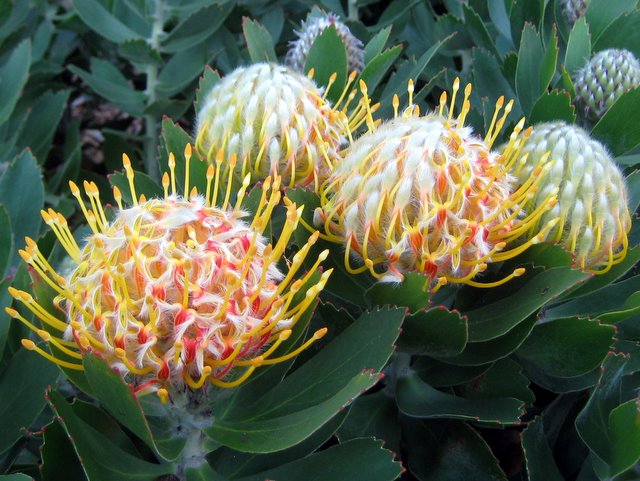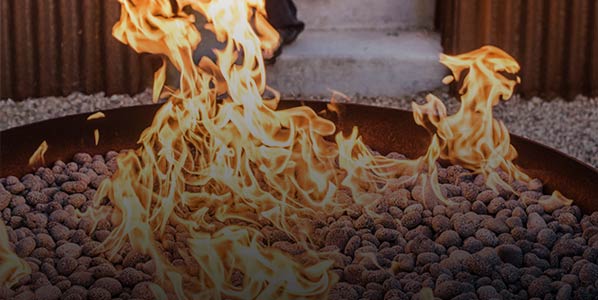Coastal Gems: The Protea Family
Our central coast is blessed to share a Mediterranean-style climate with 4 other zones around the globe. This means we have the ability to feature plants in our gardens from an incredibly rich and diverse palette that are well-adapted to our growing conditions. Many of these fascinating shrubs are just coming into bloom now, so I’m highlighting the Protea family as one to watch.
 Taken from the Greek, the Protea family was named after the legendary sea god Proteus, who could change his shape at will. As you will see, the family name was inspired by the surprising diversity offlowers and foliage across the different species.
Taken from the Greek, the Protea family was named after the legendary sea god Proteus, who could change his shape at will. As you will see, the family name was inspired by the surprising diversity offlowers and foliage across the different species.
Leucadendrons are probably the most popular of the Proteas for their year-round beauty and ease of garden culture. Hailing from South Africa, their chameleon-like ability to change their leaf color from green to burgundy and blush tones, to shades of yellow throughout the seasons makes them an outstanding garden subject. The various species range from dense 3-foot shrubs to 15-foot trees, so there’s usually a niche in any garden that could benefit from one, as long as the soil drains well.
 Arguably the most exotic branch of the Protea family are the Leucospermums, or "Pincushions." These intriguing flowers might have caught your eye highlighting a vase arrangement or creating a showstopping garden presence in a coastal planting. The waxy, spider-like flowers will light up your garden from late winter into spring with radiant shades of orange, red and yellow. The fuzzy foliage is an attractive attribute as well and comes in shapely lobes of green and silver, tipped with red.
Arguably the most exotic branch of the Protea family are the Leucospermums, or "Pincushions." These intriguing flowers might have caught your eye highlighting a vase arrangement or creating a showstopping garden presence in a coastal planting. The waxy, spider-like flowers will light up your garden from late winter into spring with radiant shades of orange, red and yellow. The fuzzy foliage is an attractive attribute as well and comes in shapely lobes of green and silver, tipped with red.
The last arm of the Protea clan in this brief synopsis are the Banksias, an incredibly variable group ranging from low-growing species that will spill over walls, to dense shrubs and 20-foot trees. The flowers resemble fuzzy, elongated pine cones, with a texture that begs to be touched. They come in nearly every color from brilliant golds and yellows to vivid violets, oranges and fiery reds. Their foliage varies from pine needle forms and fern-like sprigs, to slender leaves whose edges appear to have been cut with a pinking shear. Their bold character makes them a fascinating background subject or a striking middle-of-the-border shrub as well.

With so many different Proteas, and so little space, how do you decide which ones to plant? Besides their outstanding beauty, they are very low maintenance plants and are versatile enough to fill a variety of garden functions:
- Try using a stand of Leucadendron ‘Safari Sunset’ to make an attractive privacy screen
- Employ creeping banksias to tackle a tough slope
- Plant Leucospermum reflexum, 'The Skyrocket Pincushion,' to anchor the back of a colorful perennial planting.
The key to successful Protea cultivation is to provide well-drained soil, moderate temperatures, and low soil fertility. If you're on native clay, build berms with excess soil to facilitate better drainage. If your garden is a coastal sand dune, then you're in luck and you'll be able to grow these plants to perfection. All the Proteas mentioned above are coming into their peak season shortly so keep your eyes open for these botanical gems, and let us know what catches your eye!




